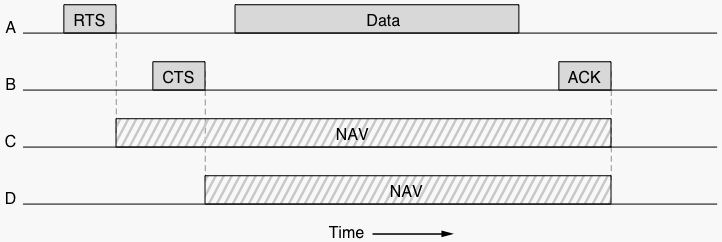802.11 Collision Avoidance, continued
There are two final considerations -
- When the receiver (B) successfully receives a data frame,
it must reply with an ACK frame.
All other nodes must wait for this ACK frame before they can transmit
their own RTS frames.
The additional ACK frames were not defined in the early MACA protocols,
but added to the Wireless MACA -> MACAW protocol used today.
- What if two nodes simultaneously issue an RTS?
If they are not in range, there is little problem,
we can have two transmission sequences in the same medium.
If the two RTS frames collide,
then any receivers will not be able to guess what they were,
and no CTS frame will be issued.
When no CTS arrives at the senders,
they assume a collision and undergo
the standard 802.3 binary exponential backoff algorithm.
CITS3002 Computer Networks, Lecture 4, Local Area Networks (LANs and WLANs), p21, 20th March 2024.
|


 CITS3002
CITS3002 help3002
help3002 CITS3002 schedule
CITS3002 schedule